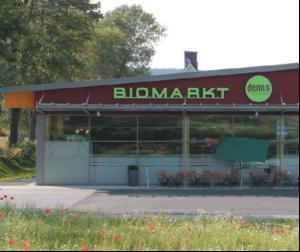

|
Edward Lowton
Editor |


|
| Home> | Energy Management | >HVAC | >Supermarket re-uses waste heat to cut costs |
ARTICLE
Supermarket re-uses waste heat to cut costs
25 January 2013
Intelligent use of waste heat from refrigeration cabinets used in food retailing can save both energy and costs. The Daikin Europe Conveni-pack is a mass produced allin- one system that uses all waste heat generated thr

Intelligent use of waste heat from
refrigeration cabinets used in
food retailing can save both
energy and costs. The Daikin Europe
Conveni-pack is a mass produced allin-
one system that uses all waste heat
generated through refrigeration heat
within commercial food outlets. The
100th system to be marketed in
Germany is installed in a branch of
denn's Biomarkt (an organic
supermarket chain).
The chain wanted a solution that would offer an integrated approach for cooling, heating and airconditioning.
Conveni-pack has enabled it to do without fossil fuels, to benefit from an energy saving of 20-30% and reduce CO2, compared to older branches still using conventional units.
Four supermarkets were fitted with the R-407c refrigerant operated model. The second generation Conveni-pack, with new compressor technology and a new cooling agent management system, has been on the market since May 2010. This newer R-410A operated system ensures efficient operation with low energy consumption and, when compared to the earlier model, reduces running costs further - by an average of 18%.
The chain wanted a solution that would offer an integrated approach for cooling, heating and airconditioning.
Conveni-pack has enabled it to do without fossil fuels, to benefit from an energy saving of 20-30% and reduce CO2, compared to older branches still using conventional units.
Four supermarkets were fitted with the R-407c refrigerant operated model. The second generation Conveni-pack, with new compressor technology and a new cooling agent management system, has been on the market since May 2010. This newer R-410A operated system ensures efficient operation with low energy consumption and, when compared to the earlier model, reduces running costs further - by an average of 18%.
MORE FROM THIS COMPANY
OTHER ARTICLES IN THIS SECTION

















